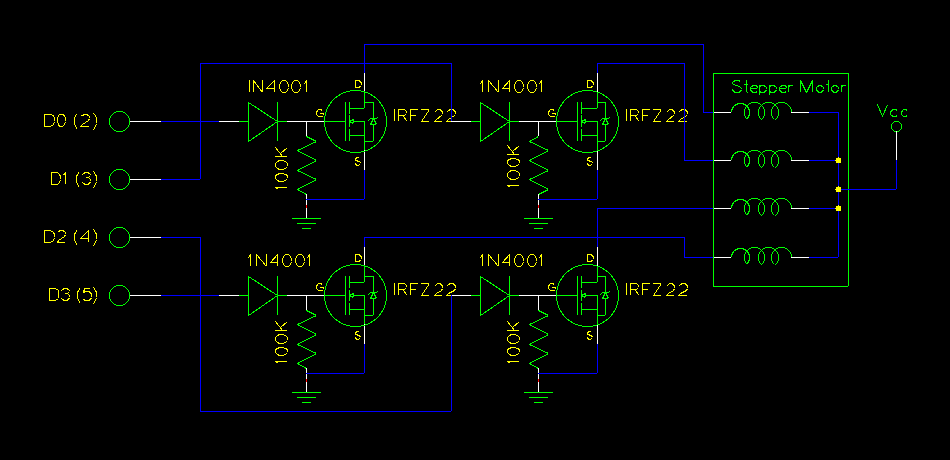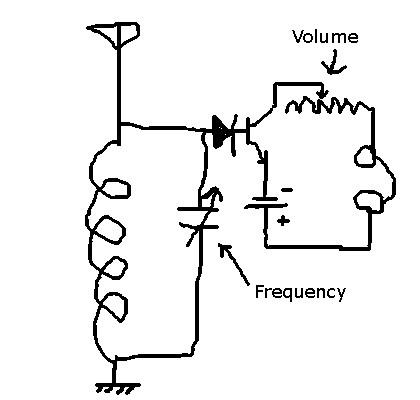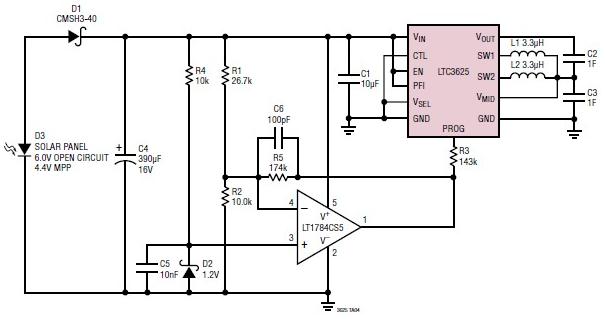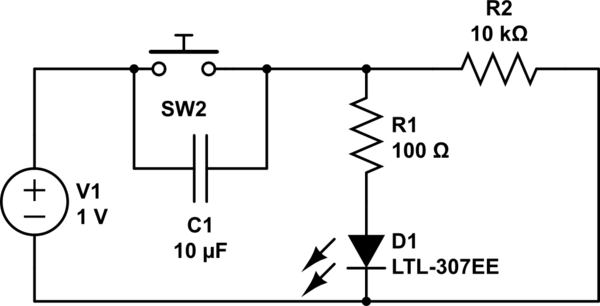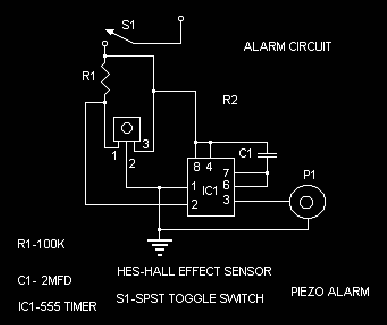
capacitor Choosing components for a triacs snubber
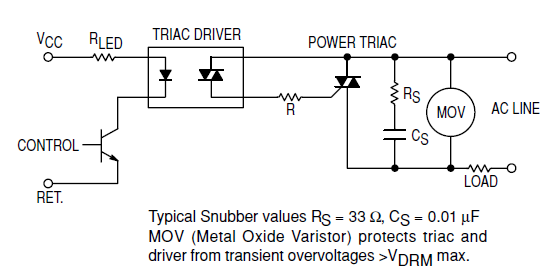
Interfacing the BT139-600 TRIAC with the MOC3051-M Opto-triac requires the construction of a snubber circuit as illustrated in the MOC3051M opto-triac's datasheet on page 8, figure 12. The load connected to this circuit will be a 230V AC, 4A motor. Recommendations are needed for the characteristics of the resistor (Rs), capacitor (Cs), and metal oxide varistor (MOV) in the schematic, including the types of components, power specifications, and voltage limits. Additionally, the snubber circuit's role is to dissipate transient energy during the switch-off period. Understanding the energy characteristics is essential to determine the appropriate components for effective energy management. The snubber must prevent reactive voltage from rising to dangerous levels, dissipate reactive energy before the next switching cycle, and have minimal impact during normal operation.
The interfacing of the BT139-600 TRIAC with the MOC3051-M Opto-triac is a common approach in controlling AC loads, particularly for applications like motor control. The BT139-600 is a sensitive gate TRIAC capable of handling high voltage and current, making it suitable for switching applications. The MOC3051-M serves as an opto-isolator, providing electrical isolation between the control circuit and the high-voltage load.
To construct the snubber circuit, the resistor (Rs), capacitor (Cs), and MOV must be selected based on the load characteristics and expected transient conditions. The resistor should be rated for power dissipation that can handle the energy during transient events. Typically, a resistor with a power rating of at least 1W is recommended, though this may vary depending on the specific application and expected transients.
The capacitor (Cs) should be a film capacitor rated for AC applications, typically with a voltage rating of at least 1.5 times the supply voltage, which in this case would be around 350V or higher to ensure reliability. A capacitance value in the range of 0.1µF to 0.47µF is commonly used, but this should be determined based on the specific energy dissipation requirements of the motor being controlled.
The MOV is crucial for protecting the circuit from voltage spikes. It should be rated for a clamping voltage that is higher than the peak voltage of the AC supply but low enough to protect sensitive components in the circuit. Selecting an MOV with a voltage rating of around 300V to 400V would be appropriate for a 230V AC application.
The snubber circuit's primary function is to absorb the transient energy generated when the TRIAC switches off, preventing voltage spikes that could damage the TRIAC or other components in the circuit. It acts as an energy sink, allowing the transient energy to dissipate safely and ensuring stable operation of the TRIAC and connected load.
A circuit diagram for this configuration would include the BT139-600 TRIAC connected in series with the load (motor), with the MOC3051-M providing the control signal. The snubber circuit, consisting of Rs, Cs, and MOV, would be connected in parallel to the TRIAC to effectively manage transients and protect the circuit.
In conclusion, careful selection of the resistor, capacitor, and MOV, along with proper circuit design, is essential for the effective interfacing of the BT139-600 TRIAC with the MOC3051-M Opto-triac in controlling a 230V AC motor while ensuring reliability and safety.Interfacing the BT139-600 TRIAC with this MOC3051-M Opto-triac. Build a snubber circuit for the TRIAC as shown in the MOC3051M opto-triac`s datasheet @ page 8, figure 12. The load will be a 230V AC, 4A motor. What are the recommended characteristics of the Rs, Cs and MOV in that schematic (the type of the resistor and capacitor, power specifications, voltage limits) Would this components be a good pick for
the snubber Please specify load characteristics and use of circuit. Ideally a circuit diagram. The snubber`s role is to dissipate transient energy which is looking for a home at switch off time. We need to know how much energy is there and how it is "stored" to know what sort of home it needs. As a guide you want an energy sink that will stop reactive voltage rising dangerously high, that will dissipate available ractive energy prior to the next switching cycle and which has minimal possible effect the rest of the time. Not magic, just compromise. Russell McMahon Aug 3 `11 at 2:09 🔗 External reference
The interfacing of the BT139-600 TRIAC with the MOC3051-M Opto-triac is a common approach in controlling AC loads, particularly for applications like motor control. The BT139-600 is a sensitive gate TRIAC capable of handling high voltage and current, making it suitable for switching applications. The MOC3051-M serves as an opto-isolator, providing electrical isolation between the control circuit and the high-voltage load.
To construct the snubber circuit, the resistor (Rs), capacitor (Cs), and MOV must be selected based on the load characteristics and expected transient conditions. The resistor should be rated for power dissipation that can handle the energy during transient events. Typically, a resistor with a power rating of at least 1W is recommended, though this may vary depending on the specific application and expected transients.
The capacitor (Cs) should be a film capacitor rated for AC applications, typically with a voltage rating of at least 1.5 times the supply voltage, which in this case would be around 350V or higher to ensure reliability. A capacitance value in the range of 0.1µF to 0.47µF is commonly used, but this should be determined based on the specific energy dissipation requirements of the motor being controlled.
The MOV is crucial for protecting the circuit from voltage spikes. It should be rated for a clamping voltage that is higher than the peak voltage of the AC supply but low enough to protect sensitive components in the circuit. Selecting an MOV with a voltage rating of around 300V to 400V would be appropriate for a 230V AC application.
The snubber circuit's primary function is to absorb the transient energy generated when the TRIAC switches off, preventing voltage spikes that could damage the TRIAC or other components in the circuit. It acts as an energy sink, allowing the transient energy to dissipate safely and ensuring stable operation of the TRIAC and connected load.
A circuit diagram for this configuration would include the BT139-600 TRIAC connected in series with the load (motor), with the MOC3051-M providing the control signal. The snubber circuit, consisting of Rs, Cs, and MOV, would be connected in parallel to the TRIAC to effectively manage transients and protect the circuit.
In conclusion, careful selection of the resistor, capacitor, and MOV, along with proper circuit design, is essential for the effective interfacing of the BT139-600 TRIAC with the MOC3051-M Opto-triac in controlling a 230V AC motor while ensuring reliability and safety.Interfacing the BT139-600 TRIAC with this MOC3051-M Opto-triac. Build a snubber circuit for the TRIAC as shown in the MOC3051M opto-triac`s datasheet @ page 8, figure 12. The load will be a 230V AC, 4A motor. What are the recommended characteristics of the Rs, Cs and MOV in that schematic (the type of the resistor and capacitor, power specifications, voltage limits) Would this components be a good pick for
the snubber Please specify load characteristics and use of circuit. Ideally a circuit diagram. The snubber`s role is to dissipate transient energy which is looking for a home at switch off time. We need to know how much energy is there and how it is "stored" to know what sort of home it needs. As a guide you want an energy sink that will stop reactive voltage rising dangerously high, that will dissipate available ractive energy prior to the next switching cycle and which has minimal possible effect the rest of the time. Not magic, just compromise. Russell McMahon Aug 3 `11 at 2:09 🔗 External reference
